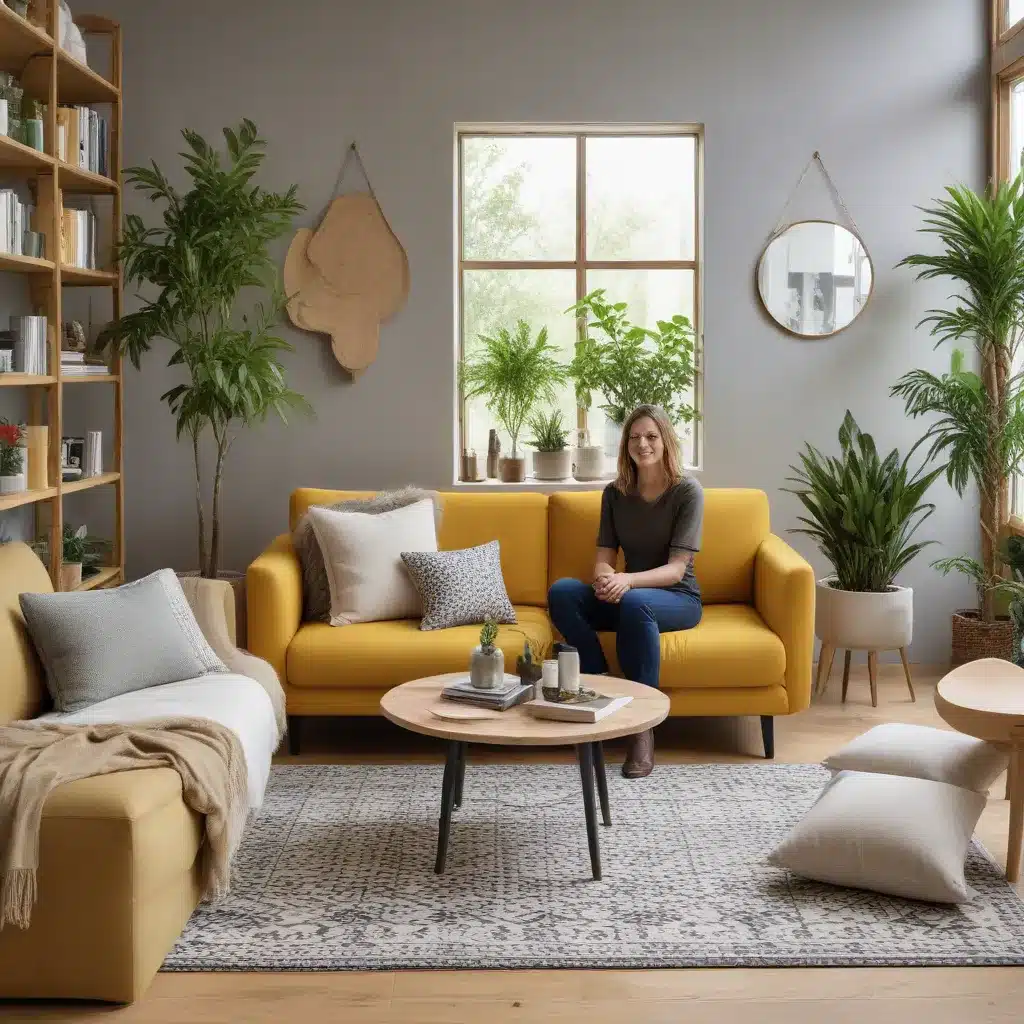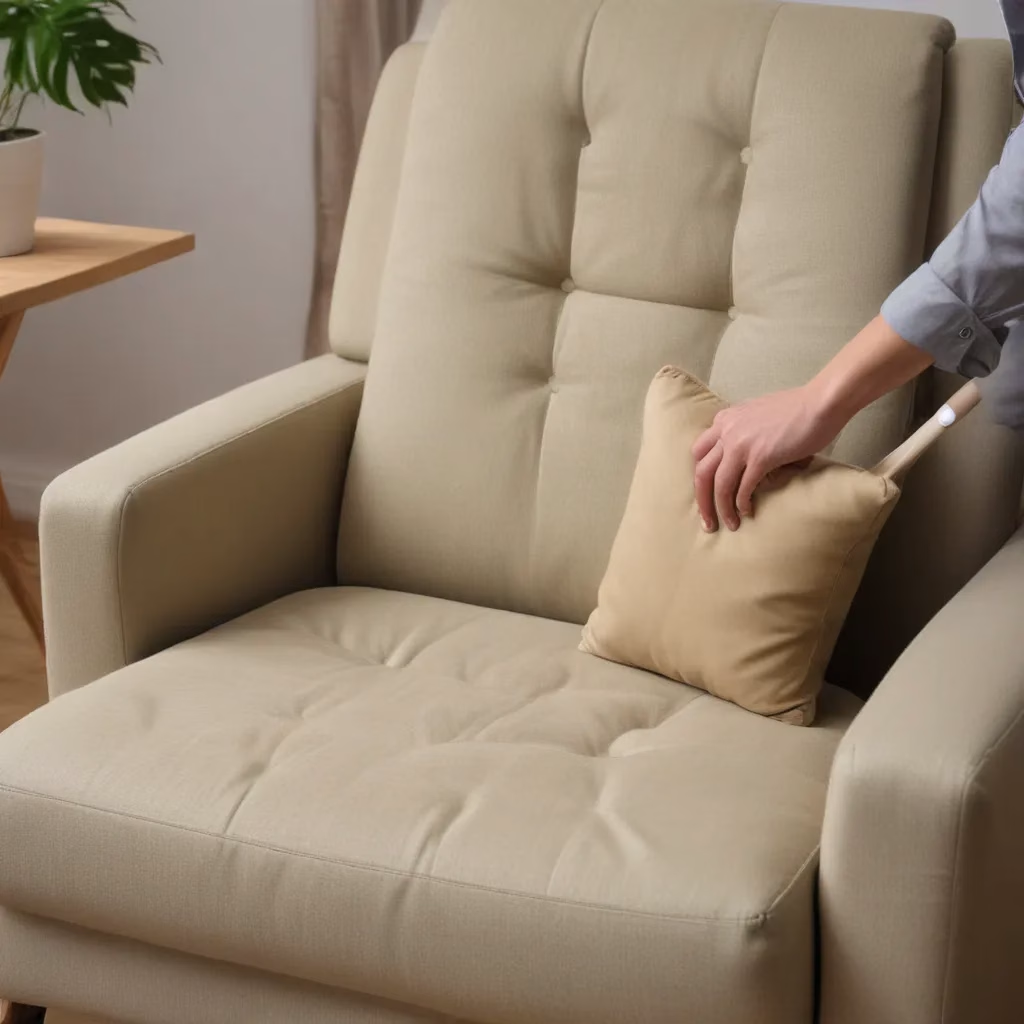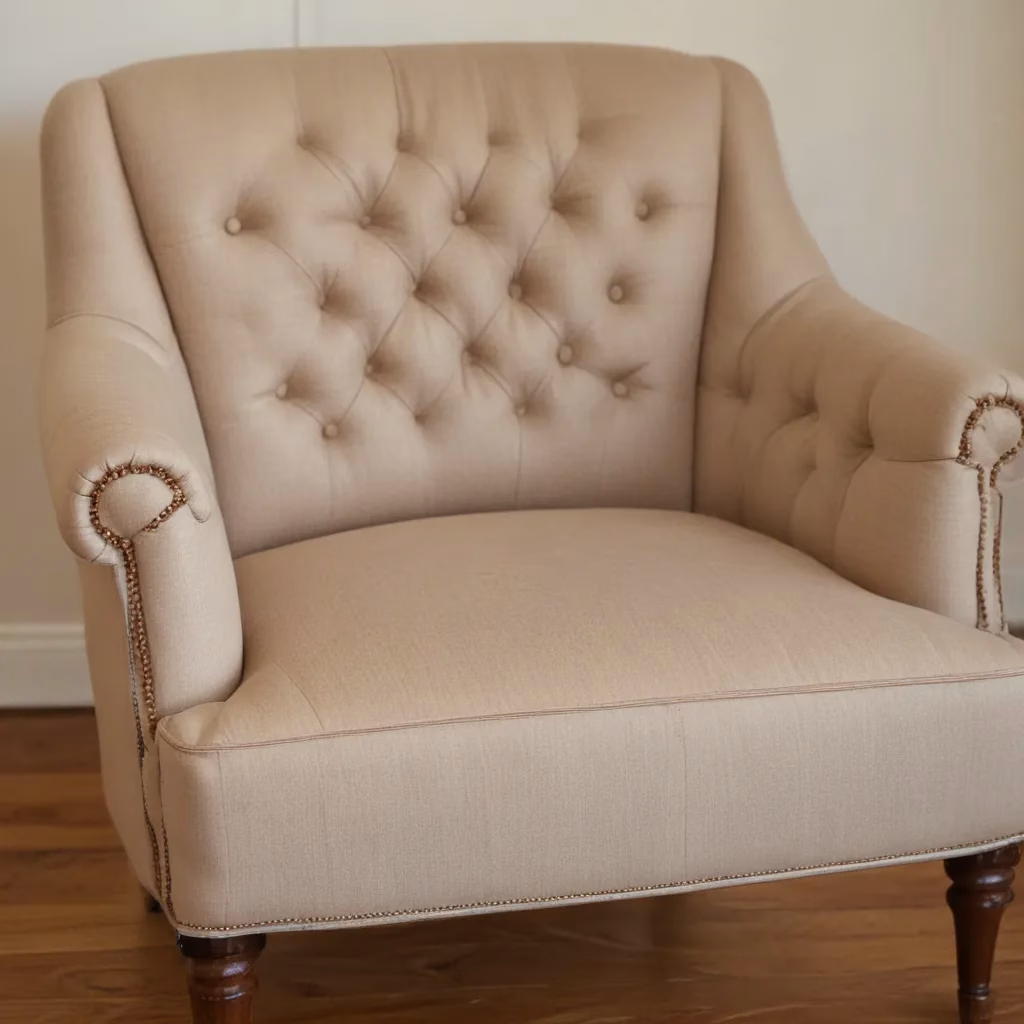
The Evolution of Sofa Design: From Classic to Contemporary
As a furniture specialist with years of experience in the industry, I’ve witnessed firsthand the fascinating evolution of sofa design. The humble sofa, once a simple seating solution, has transformed into a statement piece that can define an entire living space.
In my early days working with furniture, I remember when bulky, overstuffed sofas dominated showroom floors. These behemoths offered comfort but often overwhelmed smaller living rooms. Fast forward to today, and we’re seeing a shift towards sleeker, more versatile designs that cater to modern lifestyles and diverse living spaces.
One trend I’m particularly excited about is the rise of modular sofas. These clever designs allow homeowners to customize their seating arrangement to fit their specific needs. I recently worked with a client who lives in a compact urban apartment. We opted for a modular sofa that could be easily reconfigured – perfect for intimate gatherings or stretched out for movie nights. The flexibility of these pieces is truly remarkable.
Upholstery Choices: Balancing Style and Practicality
When it comes to sofa upholstery, the options can be overwhelming. As someone who’s helped countless clients navigate this decision, I always stress the importance of balancing style with practicality.
Leather has long been a popular choice, and for good reason. It’s durable, easy to clean, and develops a beautiful patina over time. I remember a client who was hesitant about leather, fearing it would be too cold or sticky. We found a top-grain leather sofa in a rich cognac color, and she was amazed at how comfortable and luxurious it felt.
For those seeking a more casual look, performance fabrics have come a long way. These materials are designed to resist stains, fading, and wear, making them ideal for homes with children or pets. I recently recommended a performance velvet sofa to a family with young kids and a dog. They were thrilled to have a stylish piece that could stand up to everyday life.
Natural fibers like linen and cotton offer a relaxed, breathable option. However, I always caution clients about their susceptibility to staining. If you’re set on these materials, consider treating them with a fabric protector or opting for slipcovers for easy cleaning.
The Art of Sofa Placement: Maximizing Space and Flow
One aspect of furniture selection that’s often overlooked is placement. As a specialist, I’ve seen how the right (or wrong) positioning can dramatically impact a room’s functionality and aesthetics.
In larger living rooms, I often recommend creating multiple seating areas. This approach fosters intimacy and encourages conversation. I once worked on a project where we placed two smaller sofas perpendicular to each other, with a coffee table in between. This created a cozy nook within a spacious room, perfect for casual chats or reading.
For smaller spaces, consider a sofa with clean lines and raised legs. This creates an illusion of more floor space and allows light to flow underneath. In a recent project, we used a mid-century inspired sofa with tapered legs in a compact living room. The result was a space that felt open and airy, despite its limited square footage.
Don’t be afraid to float your sofa away from the walls. This can actually make a room feel larger and more dynamic. I often suggest placing a console table behind a floating sofa to create a clear walkway and provide additional surface area.
Sofa Care and Maintenance: Preserving Your Investment
As someone who’s passionate about furniture, I can’t stress enough the importance of proper care and maintenance. A well-maintained sofa can last for decades, becoming a cherished piece in your home.
Regular vacuuming is crucial, regardless of your sofa’s upholstery. Use the upholstery attachment and go over the entire surface, including the back and sides. Don’t forget to lift the cushions and vacuum underneath – you’d be surprised at what can accumulate there!
For leather sofas, I recommend a gentle wipe-down with a slightly damp cloth every few weeks. Avoid harsh chemicals or excessive water, which can damage the leather. Instead, use a leather conditioner once or twice a year to keep the material supple and prevent cracking.
Fabric sofas benefit from regular brushing with a soft-bristled brush. This helps to remove dust and prevent dirt from settling into the fibers. For spills, act quickly! Blot (don’t rub) the area with a clean, white cloth to absorb as much liquid as possible.
One of my favorite tips for extending the life of your sofa is to rotate the cushions regularly. This ensures even wear and helps maintain the sofa’s shape. I suggest doing this every few months, or more frequently for heavily used sofas.
Sofa Trends: What’s Hot in the World of Seating
As a furniture specialist, staying on top of trends is part of my job. It’s exciting to see how sofa designs evolve to meet changing tastes and lifestyles.
Curved sofas are making a big comeback. These sinuous shapes add a touch of drama and softness to living spaces. I recently used a curved sectional in a client’s open-plan living area. It created a natural divide between the seating area and the dining space while adding a sculptural element to the room.
Another trend I’m seeing is a renewed interest in bold colors and patterns. While neutral sofas will always have their place, more clients are opting for sofas in rich jewel tones or featuring striking prints. It’s a wonderful way to inject personality into a space.
Sustainable materials are also gaining traction. I’m particularly excited about sofas made with recycled fabrics or responsibly sourced wood frames. It’s great to see the industry moving towards more eco-friendly options.
The Role of Technology in Modern Sofas
As our homes become smarter, so do our sofas. I’ve been fascinated by the integration of technology into seating design.
USB charging ports and built-in power outlets are becoming increasingly common in sofas. It’s a practical feature that reflects our device-centric lifestyles. I recently worked with a client who was thrilled to find a sofa with discreet charging stations – no more hunting for outlets or tripping over cords!
Some high-end sofas now come with adjustable headrests and lumbar support, controlled via smartphone apps. While these features come at a premium, they can be a game-changer for those seeking personalized comfort.
Selecting the Right Sofa for Your Lifestyle
When advising clients on sofa selection, I always emphasize the importance of considering lifestyle factors. A sofa that works beautifully for a young couple might not be the best choice for a family with small children.
For households with pets, I often recommend leather or tightly woven fabrics that resist claw marks and make hair removal easier. One of my clients, a dog owner, opted for a sofa with removable, washable covers. It’s been a practical solution that allows them to enjoy their furry friend without worrying about permanent damage to their furniture.
If you enjoy entertaining, consider a sectional sofa. These versatile pieces can accommodate large groups and can often be rearranged to suit different occasions. I once helped design a living room for a couple who loved hosting game nights. We chose a U-shaped sectional that provided ample seating and created a natural gathering space.
For those who value versatility, sleeper sofas have come a long way in terms of comfort and style. They’re an excellent option for homes without a dedicated guest room. I recently found a beautifully designed sleeper sofa for a client living in a studio apartment. It seamlessly transformed from a chic seating option to a comfortable bed for overnight guests.
The Psychology of Color in Sofa Selection
Color plays a crucial role in how we perceive and interact with our living spaces. As a furniture specialist, I find the psychology of color fascinating, especially when it comes to sofa selection.
Neutral colors like beige, gray, and white remain popular choices for sofas. They offer versatility and can easily adapt to changing decor styles. I often recommend neutral sofas to clients who like to switch up their accessories seasonally. A cream-colored sofa, for instance, can serve as a blank canvas, allowing you to express your style through pillows, throws, and artwork.
However, don’t underestimate the power of a bold-colored sofa. A rich blue velvet sofa can add depth and sophistication to a room, while a sunny yellow linen sofa can inject energy and optimism. I once helped a client choose a forest green leather sofa for their study. It created a sense of calm and connection to nature, perfect for a space dedicated to reading and reflection.
When selecting a sofa color, consider the overall mood you want to create in your space. Cool tones like blues and greens can promote relaxation, while warm tones like reds and oranges can energize a room. The key is to find a balance that resonates with your personal style and the function of your space.
The Importance of Comfort: Beyond Aesthetics
While style is certainly important, I always remind my clients not to overlook comfort when selecting a sofa. After all, this is a piece of furniture you’ll likely use every day.
Seat depth is a crucial factor in sofa comfort. A deeper seat (typically 21-24 inches) is great for taller individuals or those who like to curl up on the sofa. Shallower seats (around 20 inches) provide more back support and are often preferred by shorter individuals or those with back problems.
Cushion fill also plays a significant role in comfort. Down-filled cushions offer a soft, sink-in feel but require regular fluffing to maintain their shape. Foam cushions provide firmer support and hold their shape well but can feel less cozy. A popular option is a combination of both – a foam core wrapped in down or a down alternative. This provides a good balance of support and softness.
I always encourage clients to “test drive” a sofa before making a purchase. Sit in different positions, lie down if you plan to nap on it, and spend at least 10-15 minutes on the sofa. It’s the best way to ensure you’ll be happy with your choice in the long run.
Sustainable Sofas: Eco-Friendly Options for Conscious Consumers
As awareness of environmental issues grows, I’ve seen an increasing demand for sustainable furniture options. The good news is that the sofa industry is responding with innovative, eco-friendly designs.
One approach to sustainability is the use of recycled materials. Some manufacturers are creating stunning sofas using fabric made from recycled plastic bottles. I recently worked with a client who was thrilled to find a stylish sectional made with recycled polyester that looked and felt like a high-end velvet.
Another aspect of sustainability is the longevity of the piece. Investing in a well-made sofa with a sturdy frame and high-quality upholstery can significantly reduce waste in the long run. I always advise clients to look for sofas with hardwood frames and eight-way hand-tied springs, which are indicators of quality construction.
Some companies are taking sustainability a step further by offering take-back programs. When you’re ready for a new sofa, they’ll collect your old one for recycling or refurbishment. It’s a fantastic way to ensure your furniture doesn’t end up in a landfill.
The Art of Mixing and Matching: Creating a Cohesive Living Space
One of the most enjoyable aspects of my job is helping clients create cohesive living spaces that reflect their personality. The sofa, as a central piece in most living rooms, plays a crucial role in this process.
Mixing different furniture styles can create a rich, layered look in your living space. Don’t be afraid to pair a modern sofa with vintage accent chairs or a traditional sofa with contemporary side tables. The key is to find a common element – be it color, texture, or form – that ties everything together.
I recently worked on a project where we paired a sleek, low-profile leather sofa with ornate, antique armchairs. The contrast was striking, but by using a neutral color palette and adding textured throw pillows, we created a harmonious and inviting space.
When it comes to accent pieces like coffee tables and side tables, consider the scale and proportion in relation to your sofa. A general rule of thumb is that your coffee table should be about two-thirds the length of your sofa and at a height that’s comfortable for reaching from a seated position.
Don’t forget about lighting! The right lamps can enhance the comfort and functionality of your sofa area. I often recommend a mix of ambient and task lighting. A floor lamp behind the sofa can create a cozy reading nook, while table lamps on side tables provide softer, atmospheric lighting for evenings.
The Future of Sofa Design: What’s on the Horizon?
As a furniture specialist, I’m always excited to think about what the future holds for sofa design. Based on current trends and technological advancements, I see several exciting possibilities on the horizon.
Smart fabrics are an area of particular interest. Imagine a sofa that could regulate its temperature, providing warmth on chilly evenings and coolness on hot summer days. Some prototypes are already in development, and I’m eager to see how they’ll be incorporated into mainstream sofa design.
Virtual reality (VR) is another technology that could revolutionize the sofa shopping experience. While nothing beats sitting on a sofa in person, VR could allow customers to visualize how a piece would look in their specific space before making a purchase. This could be especially helpful for online shoppers or those redesigning their homes.
As urban living spaces continue to shrink, I anticipate we’ll see more innovative, space-saving sofa designs. Modular pieces that can be easily reconfigured or sofas with built-in storage solutions are likely to become increasingly popular.
Sustainability will undoubtedly continue to be a driving force in sofa design. I expect to see more experimentation with eco-friendly materials, such as fabrics made from agricultural waste or biodegradable components.
Conclusion: The Heart of the Home
As we’ve explored throughout this article, sofas are so much more than just a place to sit. They’re the heart of our living spaces, the backdrop to countless memories, and a reflection of our personal style.
Whether you’re in the market for a new sofa or looking to breathe new life into your existing one, I hope this guide has provided valuable insights. Remember, the perfect sofa is one that not only looks beautiful but also meets your specific needs in terms of comfort, durability, and lifestyle.
If you’re feeling inspired to update your living space, I encourage you to explore the wide range of options available at Sofa Spectacular. Their curated collection offers something for every style and budget, backed by expert advice to help you make the best choice for your home.
Ultimately, choosing a sofa is a personal journey. Trust your instincts, consider your lifestyle, and don’t be afraid to think outside the box. After all, your living space should be a reflection of you – comfortable, stylish, and uniquely yours.



